A subset of epithelial cells with CCSP promoter activity participates in alveolar development
- PMID: 20693404
- PMCID: PMC3135842
- DOI: 10.1165/rcmb.2009-0429OC
A subset of epithelial cells with CCSP promoter activity participates in alveolar development
Abstract
Alveolar formation is hallmarked by the transition of distal lung saccules into gas exchange units through the emergence of secondary crests and an exponential increase in surface area. Several cell types are involved in this complex process, including families of epithelial cells that differentiate into alveolar type I and II cells. Subsets of cells expressing Clara cell secretory protein (CCSP) have been identified in both lung and bone marrow compartments, and are described as a progenitor/stem cell pool involved in airway regeneration and alveolar homeostasis. Whether these cells also participate in alveolar formation during postnatal development remains unknown. Based on their regenerative capacity, we asked whether these cells participate in alveogenesis. We used a previously described transgenic mouse model (CCSP-tk) in which Ganciclovir exposure selectively depletes all cells with CCSP promoter activity through intracellular generation of a toxic metabolite of thymidine kinase. Our results showed that Ganciclovir treatment in newborn CCtk mice depleted this cell population in lung airways and bone marrow, and was associated with alveolar hypoplasia and respiratory failure. Hypoplastic lungs had fewer alveolar type I and II cells, with impaired secondary crest formation and decreased vascular endothelial growth factor expression in distal airways. These findings are consistent with a model in which a unique population of cells with CCSP promoter activity that expresses vascular endothelial growth factor participates in alveolar development.
Figures

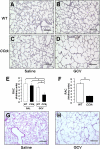

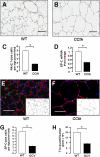
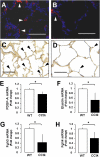


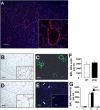
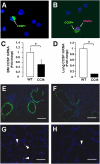

Similar articles
-
Depletion of bone marrow CCSP-expressing cells delays airway regeneration.Mol Ther. 2015 Mar;23(3):561-9. doi: 10.1038/mt.2014.223. Epub 2014 Nov 20. Mol Ther. 2015. PMID: 25409745 Free PMC article.
-
Bone marrow cells expressing clara cell secretory protein increase epithelial repair after ablation of pulmonary clara cells.Mol Ther. 2013 Jun;21(6):1251-8. doi: 10.1038/mt.2013.53. Epub 2013 Apr 23. Mol Ther. 2013. PMID: 23609017 Free PMC article.
-
A change in the number of CCSP(pos)/SPC(pos) cells in mouse lung during development, growth, and repair.Respir Investig. 2013 Dec;51(4):229-40. doi: 10.1016/j.resinv.2013.04.006. Epub 2013 Jun 4. Respir Investig. 2013. PMID: 24238231
-
Airway regeneration: the role of the Clara cell secretory protein and the cells that express it.Cytotherapy. 2009;11(6):676-87. doi: 10.3109/14653240903313974. Cytotherapy. 2009. PMID: 19878054 Review.
-
Regulation of the Clara cell secretory protein/uteroglobin promoter in lung.Ann N Y Acad Sci. 2000;923:154-65. doi: 10.1111/j.1749-6632.2000.tb05527.x. Ann N Y Acad Sci. 2000. PMID: 11193754 Review.
Cited by
-
Depletion of bone marrow CCSP-expressing cells delays airway regeneration.Mol Ther. 2015 Mar;23(3):561-9. doi: 10.1038/mt.2014.223. Epub 2014 Nov 20. Mol Ther. 2015. PMID: 25409745 Free PMC article.
-
Klotho Regulates Club Cell Senescence and Differentiation in Chronic Obstructive Pulmonary Disease.Cell Prolif. 2025 Jul;58(7):e70000. doi: 10.1111/cpr.70000. Epub 2025 Feb 10. Cell Prolif. 2025. PMID: 39930762 Free PMC article.
-
Deletion of Miro1 in airway club cells potentiates allergic asthma phenotypes.Front Allergy. 2023 Jun 12;4:1187945. doi: 10.3389/falgy.2023.1187945. eCollection 2023. Front Allergy. 2023. PMID: 37377691 Free PMC article.
-
Surfactant protein-C chromatin-bound green fluorescence protein reporter mice reveal heterogeneity of surfactant protein C-expressing lung cells.Am J Respir Cell Mol Biol. 2013 Mar;48(3):288-98. doi: 10.1165/rcmb.2011-0403OC. Epub 2012 Nov 29. Am J Respir Cell Mol Biol. 2013. PMID: 23204392 Free PMC article.
-
Hypoxia inducible factor 3α plays a critical role in alveolarization and distal epithelial cell differentiation during mouse lung development.PLoS One. 2013;8(2):e57695. doi: 10.1371/journal.pone.0057695. Epub 2013 Feb 25. PLoS One. 2013. PMID: 23451260 Free PMC article.
References
-
- Galambos C, Demello DE. Regulation of alveologenesis: clinical implications of impaired growth. Pathology 2008;40:124–140. - PubMed
-
- Husain AN, Siddiqui NH, Stocker JT. Pathology of arrested acinar development in postsurfactant bronchopulmonary dysplasia. Hum Pathol 1998;29:710–717. - PubMed
-
- Jobe AJ. The new BPD: an arrest of lung development. Pediatr Res 1999;46:641–643. - PubMed
-
- Stripp BR, Maxson K, Mera R, Singh G. Plasticity of airway cell proliferation and gene expression after acute naphthalene injury. Am J Physiol 1995;269:L791–L799. - PubMed
-
- Reynolds SD, Hong KU, Giangreco A, Mango GW, Guron C, Morimoto Y, Stripp BR. Conditional Clara cell ablation reveals a self-renewing progenitor function of pulmonary neuroendocrine cells. Am J Physiol Lung Cell Mol Physiol 2000;278:L1256–L1263. - PubMed
Publication types
MeSH terms
Substances
Grants and funding
LinkOut - more resources
Full Text Sources
Other Literature Sources
Molecular Biology Databases

